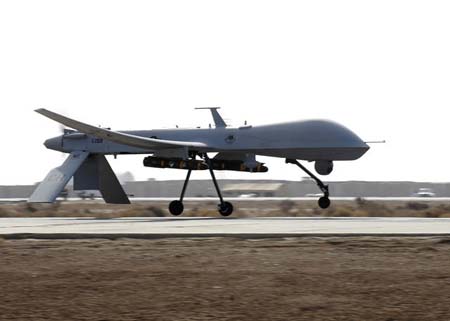Air F orce pilots and sensor operators who control MQ-1 Predator unmanned aerial vehicles in combat missions over Afghanistan and Iraq from the United States remain some of the most fatigued and taxed crews in the service, according to a March 2008 report issued report by investigators at the Naval Postgraduate School in Monterey Calif. The new work surveyed Predator crews in December 2006. It is a follow-on to an earlier study in that same year. The earlier investigation found that Predator operators had significantly increased fatigue, emotional exhaustion, and burnout relative to traditional aircrew members of other limited supply/high demand platforms. The new report finds that the survey results “were essentially unchanged” and “indicated a pervasive problem with chronic fatigue” despite some modifications in the shift schedules employed by these personnel. Indeed, “nearly 50 percent of surveyed crewmembers met the diagnostic threshold for levels of daily sleepiness which can be expected to adversely impact job performance and safety,” reads the study’s executive summary. The root problem, it states, “was not the shift system features themselves, but rather a lack of adequate manpower to provide sufficient recovery opportunities.” This problem isn’t likely to go away soon as USAF is struggling to meet the demands of combatant commanders for increasingly more and more of the streaming overhead video that the Predators provide. Getting enough Predators to the theater is one issue; having a pool of trained operators to keep them flying as often as possible is also a great challenge. The new report was prepared for and funded by the Air Force’s 311th Performance Enhancement Directorate at Brooks City-Base, Tex. (We heard about it first from Stephen Trimble’s DEW Line blog.)
orce pilots and sensor operators who control MQ-1 Predator unmanned aerial vehicles in combat missions over Afghanistan and Iraq from the United States remain some of the most fatigued and taxed crews in the service, according to a March 2008 report issued report by investigators at the Naval Postgraduate School in Monterey Calif. The new work surveyed Predator crews in December 2006. It is a follow-on to an earlier study in that same year. The earlier investigation found that Predator operators had significantly increased fatigue, emotional exhaustion, and burnout relative to traditional aircrew members of other limited supply/high demand platforms. The new report finds that the survey results “were essentially unchanged” and “indicated a pervasive problem with chronic fatigue” despite some modifications in the shift schedules employed by these personnel. Indeed, “nearly 50 percent of surveyed crewmembers met the diagnostic threshold for levels of daily sleepiness which can be expected to adversely impact job performance and safety,” reads the study’s executive summary. The root problem, it states, “was not the shift system features themselves, but rather a lack of adequate manpower to provide sufficient recovery opportunities.” This problem isn’t likely to go away soon as USAF is struggling to meet the demands of combatant commanders for increasingly more and more of the streaming overhead video that the Predators provide. Getting enough Predators to the theater is one issue; having a pool of trained operators to keep them flying as often as possible is also a great challenge. The new report was prepared for and funded by the Air Force’s 311th Performance Enhancement Directorate at Brooks City-Base, Tex. (We heard about it first from Stephen Trimble’s DEW Line blog.)
The Air Force and Space Force are both set to have new No. 2 officers. Gen. Thomas A. Bussiere has been nominated for Air Force Vice Chief of Staff and Lt. Gen. Shawn N. Bratton has been nominated to receive a fourth star as the Vice Chief of Space Operations.